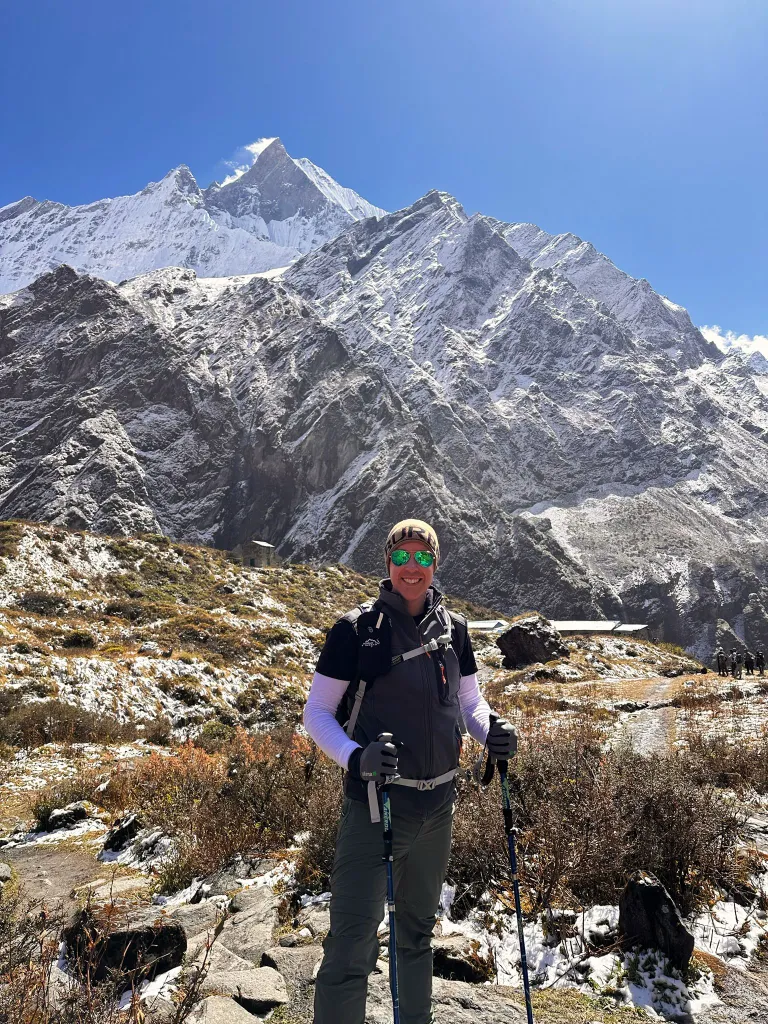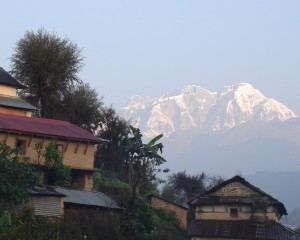Solo Trekking Safety: How to Navigate Nepal's Trails Alone
Solo trekking in Nepal sounds like a unique experience, offering the freedom, self-reliance, and personal discovery that's hard to match. Taking your walks along the trails of the most remote mountain villages and standing alone before those majestic peaks lets you fully immerse yourself in Nepal’s cultural and natural gems.
But what stands as a challenge is the responsibility. You may have the independence, but when you trek alone, there’s no one to lean on. That’s why you need to understand everything about safety, preparation, and making smart decisions for a successful solo journey.
To all our readers out there, we want to be your support system. So we’ve gathered everything you need to know to help you have the best solo trekking experience in Nepal.
Why Trek Solo in Nepal?
Nepal, the home of the world’s tallest peak, wrapping around green low and highlands, introduces plenty of trekking trails for people to explore. Interestingly, the trails have much more to offer, with the option for numerous side trips that allow trekkers to wander and immerse themselves in the beauty of the remote region, where locals have been residing for centuries.
Everest trek or Annapurna trek, every trail in Nepal is something different. What’s even more exciting is solo trekking in Nepal, as it's the best way to escape distractions, reflect on yourself, challenge yourself, and experience the world around you with greater clarity and awareness.
Besides, many trekkers have faced the challenge of not having enough flexibility to explore the region, as well as the pacing, since we are all constantly on the same pace. Several factors can impact your pace, including your energy level, the weather, and your mood.
Additionally, solo trekking offers the opportunity for unforgettable, one-of-a-kind experiences. You might find yourself sharing tea with a local family, taking a solitary moment to watch a sunset over the mountains, or discovering hidden gems off the beaten path that group trekkers might miss.
While solo trekking in Nepal is a once-in-a-lifetime experience, as solo trekkers, are you safe in Nepal?
Is It Safe to Trek Solo in Nepal?
Nepal is among the safest countries in the world, offering a serene landscape of majestic peaks and tumbling waterfalls, as well as alluring cultural gems along the world-renowned trails. The trail is lined with numerous teahouses, lodges, and other accommodations that cater to trekkers along the way.
Aside from the challenges of the trek, such as altitude sickness, unpredictable weather, and walking in remote areas, some difficulties can also arise. But with proper preparation, these things can definitely be managed.
Moreover, the government of Nepal has made it mandatory to hire a licensed guide for the most popular trekking areas. But wait—this doesn’t mean solo trekking is off the table. You still have the opportunity to experience the trail independently, with a guide who can also be your friend and help you navigate the journey.
Although this rule has been implemented, some lower-risk trails remain open to solo trekkers. These trails are typically located closer to towns, at lower altitudes, and are not too remote. One popular example is the Pikey Peak Trek, which offers beautiful mountain views and a more relaxed trekking experience.

Pre-Trek Preparation for Nepal
The best way to have a great experience while solo trekking in Nepal is to stay well-prepared. Let’s dive into some key aspects of what you need to get ready for your trek.
Permits & Documents You’ll Need for Trekking in Nepal
Before you go trekking in Nepal, you need to get a few permits. The government requires these to ensure you are trekking safely and legally. Here’s what you need:
TIMS Card (Trekkers' Information Management System)
The TIMS card is a basic permit you need for most treks in Nepal. It costs $17 for foreigners. You can get it from trekking agencies in Kathmandu or Pokhara. This card is required even for easier treks like Ghorepani Poon Hill or Langtang Valley.
National Park / Conservation Area Permits
If you are trekking in areas such as Annapurna, Langtang, or Manaslu, you require a special permit for national parks or conservation areas. These permits cost $25 each. They are available through trekking agencies or the Nepal Tourism Board.
Restricted Area Permits (RAP)
For trekking in certain remote or special areas, a Restricted Area Permit is required. For example, trekking in Upper Mustang costs $500 for the first 10 days, and $50 per extra day. Manaslu costs $100 for the first 7 days, then $15 per day after that. You must trek with at least one other person and hire a guide. Solo trekking is not allowed in these areas.
How to Apply for Permits
You can apply for these permits online through Nepal’s official website with help from your trekking agency. It’s a good idea to keep both paper and digital copies of your permits and passport with you during your trek.
Train Your Body for Trekking
The next step is to prepare for good physical fitness, as it is essential for navigating the Himalayan trail. So, how can you start with this?
Physical Fitness Preparation for Trekking in Nepal
Begin your training 6–8 weeks prior to your trek to ensure your body is adequately prepared for the challenge. Practice walking 6–7 hours a day, carrying a backpack weighing 6–8kg, to mimic real trekking conditions. Afterwards, start including cardio and strength training in your workout routine to strengthen your body. If possible, practice hiking at higher altitudes or with elevation gain to prepare your body for the conditions you’ll face. Allow adequate rest between workouts to prevent overtraining and ensure recovery.
Mental Health Preparation for Your Trek
Mental preparation is yet another non-negotiable part of your physical fitness. Staying in remote regions and facing challenges alone requires good mental fitness. You should practice mindfulness, meditation, or deep-breathing exercises to help you stay calm and focused when challenges arise. Visualizing your journey, including both the beautiful and tough moments, can also prepare you mentally for what lies ahead. Remember, it’s normal to feel overwhelmed at times, but having a positive mindset, staying connected to your purpose for the trek, and maintaining a steady pace will help you overcome any mental obstacles.
Acclimatization During Your Trek
Acclimatization is key when trekking at high altitudes. Follow the "climb high, sleep low" rule: hike to a higher altitude during the day but sleep at a lower elevation to give your body time to adjust. Include 1–2 extra rest days in your itinerary, like staying an extra night in Namche Bazaar or Manang, to help your body adjust to the thinner air. Make sure to stay hydrated, eat nutritious meals, and limit alcohol consumption to support your body’s adjustment. Diamox (acetazolamide) can help prevent altitude sickness, but consult your doctor before using it. If symptoms persist, descend to a lower altitude for safety.
Trekking Insurance
Travel insurance is crucial when trekking in Nepal, particularly in high-altitude mountain areas. It should cover emergency helicopter rescue up to 6,000 meters in the event that you become sick or injured in a remote location. The insurance must also include hospital bills and medical care. Ensure your plan clearly states coverage for trekking above 4,000 meters, as standard insurance policies often do not include coverage for high-altitude activities. Having the right insurance gives you peace of mind and keeps you safe during your adventure.
Best Places to Trek Solo in Nepal
While not all trekking routes are suitable for solo travel, some well-established trails in Nepal are safe, scenic, and supportive of independent trekkers:
- Everest Base Camp – Well-marked trail, plenty of teahouses, stunning views
- Annapurna Circuit – Diverse landscapes, easy access to food and lodging
- Ghorepani Poon Hill – Short and rewarding with panoramic mountain views
- Langtang Valley – Less crowded, culturally rich, and relatively easy
- Mardi Himal Trek – Quiet but increasingly popular, with beautiful ridge walks
- Helambu Trek – Close to Kathmandu, suitable for beginners
- Upper Mustang (with guide) – Culturally unique, restricted area (solo not allowed, but worth it with a guide)
To wrap up, Solo trekking in Nepal is impressive, but there are times when it's better not to go alone. Avoid trekking during the monsoon (June–August) and cold winter months (December–February). Also, skip very remote trails, such as Kanchenjunga or Dolpo, unless you are very experienced. If it's your first trek, it's safer not to go solo.
Instead, you can join a small group or hire a guide or porter. For restricted areas, a guide is required anyway. You can also use trekking apps or forums to find other solo travelers.
Need help for a safe and fun trek? Nepal Vision Treks can arrange everything for you—guides, permits, and more!
FAQs






